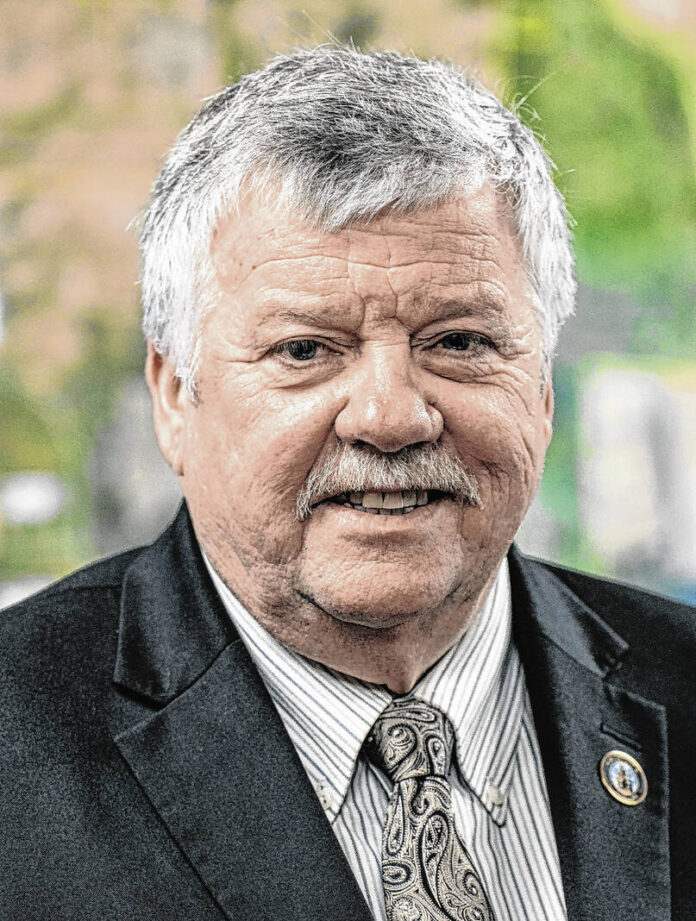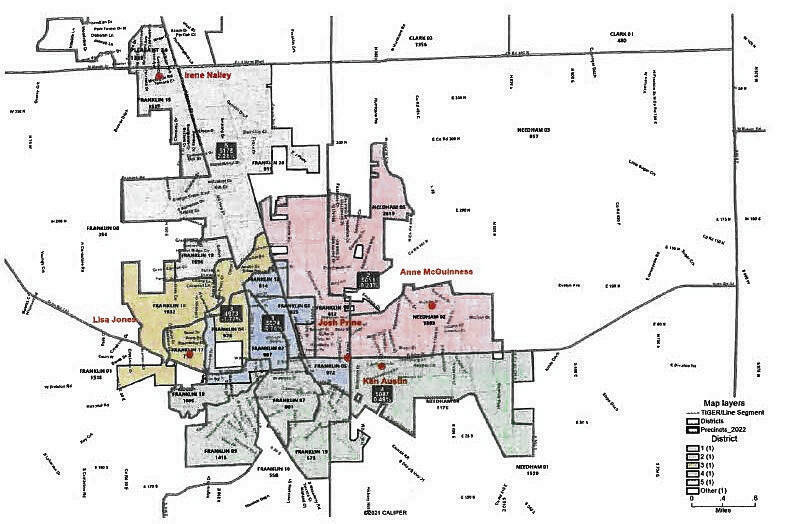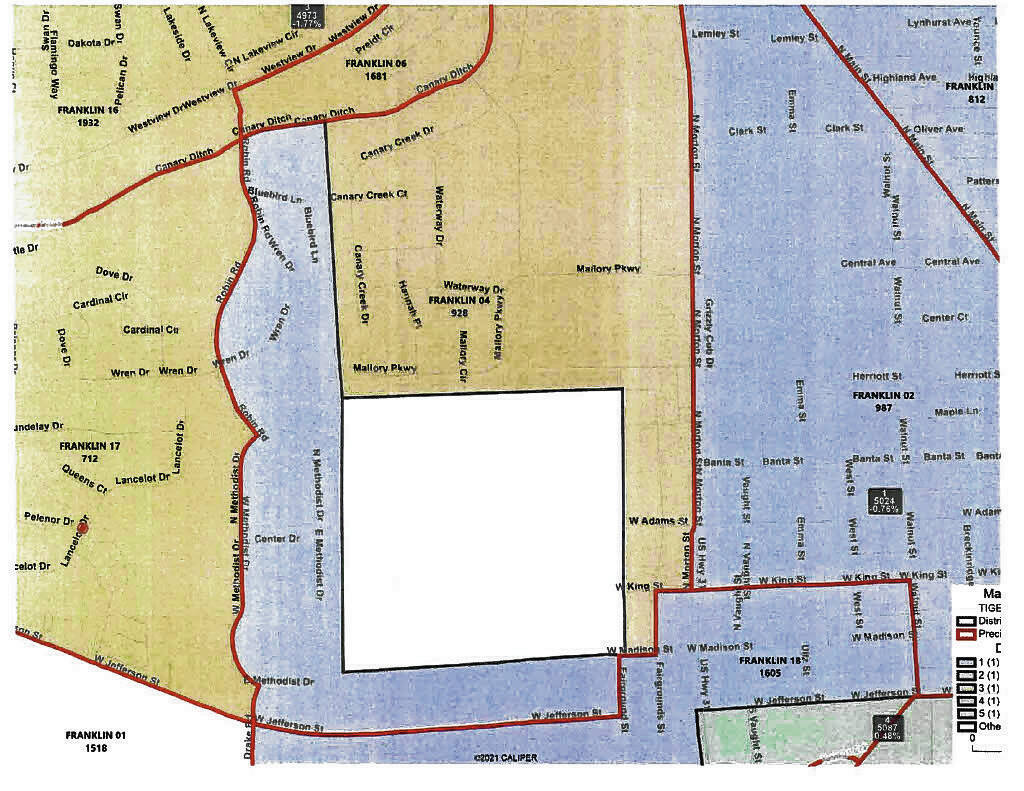Franklin is all set for 2023, with a newly approved budget and council district maps ready for the municipal election. The Franklin Common Council unanimously approved both the budget and the maps at their Monday meeting.
The $26.1 million budget was introduced in late August and a public hearing was held at the first city council meeting of September.
To prepare the budget, Mayor Steve Barnett worked with city department heads and Clerk-Treasurer Jayne Rhoades to determine what budget lines needed adjustment for inflation and planned spending. They then determined what raises could be given to city employees and elected officials.
The budget for 2023 is 4.8%, or $871,751 greater than the 2022 budget. The largest portion of the increase came from salaries, which represents a spending increase of $794,060. The increase in salary spending includes both wage increases for existing employees and elected officials as well as the cost to hire three new police officers, Barnett said.
City employees will get a raise between $2,500 and $4,000, depending on their position.
“We still feel like our employees need to be paid more. However, we only get so much money a year,” Barnett said. “And we’ve had pretty good raises this year like every merit police officer and merit fireman got a $4,000 raise.”
Barnett and Rhoades are getting a $2,500 salary increase this year because both got a lesser increase last year, he said. The city council will get a $242 increase for their monthly stipends.
The one salary increase that raised concerns for at least one member of the council is the $13,998 pay increase for Police Chief Kirby Cochran. Barnett gave Cochran that raise because, when full pay is figured in, he was making less than the fire chief and the deputy police chief.
Generous longevity pay bonuses from a now-defunct payscale increase the fire chief’s and deputy police chief’s salaries by $15,850 and $13,000, respectively. Whereas Cochran started working for the city later, under the new longevity plan, so his longevity pay is only $400.
The reason for the increase is more about fairness than about longevity pay, though, Barnett said. The raise is partially funded by reallocating $5,202 in part-time money that the police department doesn’t expect to spend in next year’s budget, budget documents show.
“Longevity didn’t play a role in it to me. What played a role to me is what was right,” Barnett said. “The police chief should not make less than a deputy chief. And I know that at least six city councilmen agreed.”
During the first September meeting, council member Shawn Taylor said he was concerned about the precedent it would set to set the police chief’s salary at $93,310. That salary is nearly $13,000 higher than the base pay for the fire chief and $19,000 higher than the base pay for the deputy police chief.
Barnett asserts the chief’s salary won’t be a long-term issue. Because it is the job of the mayor to negotiate salaries, the salary does not necessarily have to start at $93,000, it can be set at what the mayor feels is fair for the job and is affordable for the city at that time, he said.
Aside from the salary increases, inflation impacted the city budget in many ways, as the cost of everything is generally going up.
One of the most dramatic areas of increased spending is the fuel budget, which is up $225,000 over this year. While fuel prices might not soar high enough to need that much extra, Barnett expects city departments will use all but about $5,000 of that increase, he said.
Construction costs for city projects, liability insurance and utilities are other areas where city spending is spiking by necessity, he said.
“So, as people see in our own lives of inflation and how it costs them extra money, it also costs the cities money as well,” Barnett said. “So our budgets can’t stay the same.”
The budget is balanced partially because increases in spending were offset by the city passing on the cost of trash pick-up from Ray’s Trash Service to homeowners. Without the trash fee, there was $962,152 to reappropriate for wage increases and offset inflationary increases to the budget.
“Where did that money go? It went for three new police officers, it went for police cars, it went for $225,000 in fuel and some $1,000 increase in liability insurance and our energy costs,” Barnett said. “And capital; we raised the capital fund, which has the police cars in it, and some extra infrastructure money.”
In other business, the city council approved the new district maps that are being updated to reflect population growth in the city in the last 10 years.
Since the city’s population grew by only 1,601 since the last census, the original hope was to keep the boundaries as similar as possible to the current boundaries. However, unevenly distributed population growth and differences in population density of certain precincts forced changes, said Ted Nolting, an attorney with Kroger Gardis Regas, LLP, a law firm the city hired to help with redistricting.
If these changes had not been made, there would be a standard deviation of 63% between the most and least populous districts. After splitting four precincts, and adjusting the boundaries other ways, the districts have a 4.05% standard deviation, Nolting said.
Precincts being split are Franklin 3, 4, 18 and 19.
In the new maps, District 3 juts into Franklin 19 in the area west of Cumberland Drive, while the area east of the street is in District 5.
Franklin 4 is split because of the Johnson County 4-H Fairgrounds, which is uninhabited county property, so it is not part of the city’s voting area. The property is surrounded to the west and south by District 1 and to the north and east by District 3.
Franklin 18 is split at Jefferson Street and U.S. 31, with the area south of Jefferson Street and east of U.S. 31 in District 4 and those on the other side of the street in District 1.
Franklin 3 is split at Johnson Avenue, Pratt Street and Bennett Street. The area south of Pratt Street and Bennett Street and east of Johnson Avenue is part of District 2, while the area on the other side of the streets is in District 1.









